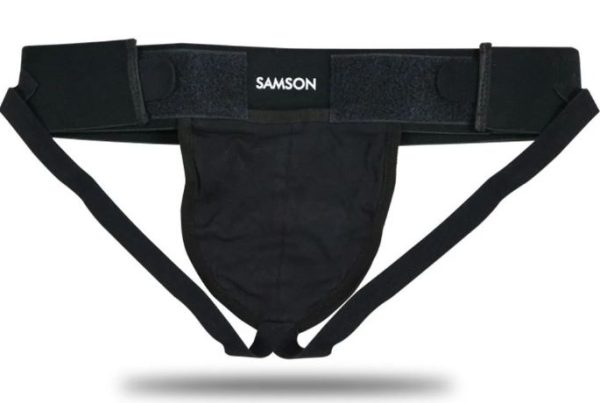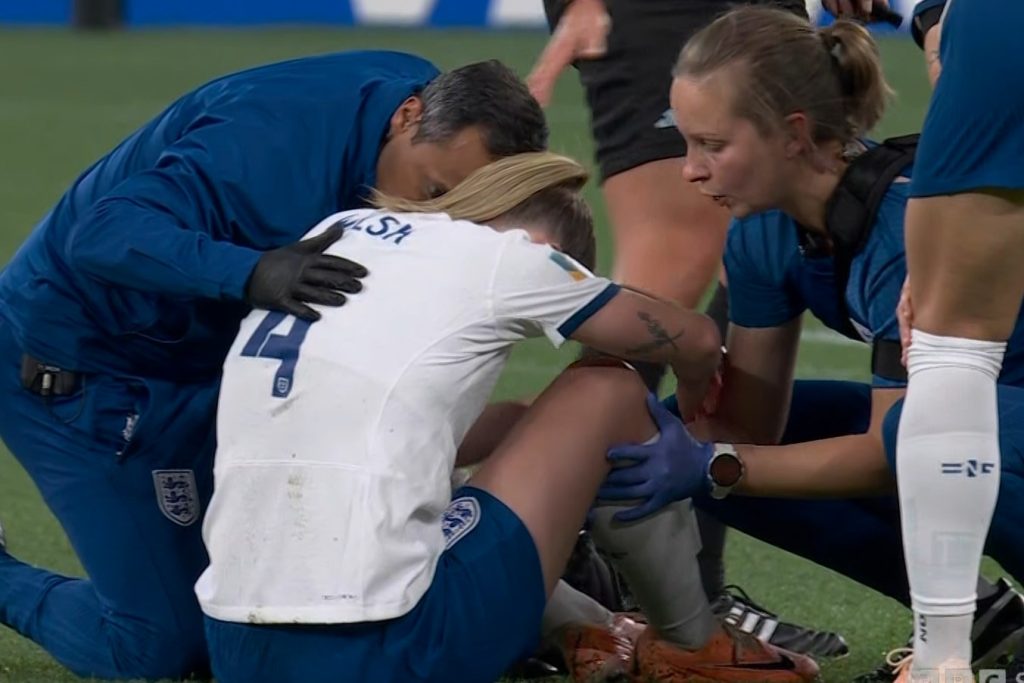
Rugby, often dubbed the “gentleman’s game,” is anything but gentle, especially for women who brave the field. It’s a sport of resilience, teamwork, and fierce competition. However, it’s also a sport that takes its toll on players, subjecting them to a range of injuries.
Among the most significant and dreaded of these injuries are ACL tears. These injuries plague women rugby players due to various physical factors and musculature differences.
In this article, we’ll explore the world of women’s rugby. Let’s delve deep into the challenges they face when dealing with ACL tears and other injuries.
The Prevalence of ACL Tears in Women’s Rugby
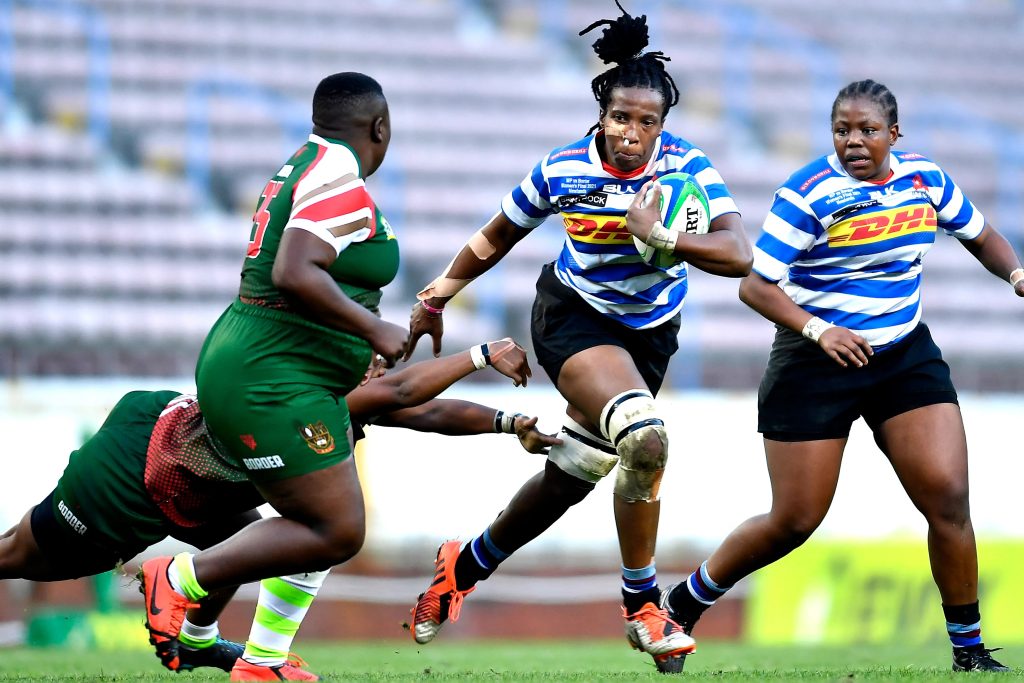
ACL Tears: A Constant Threat
Anterior Cruciate Ligament (ACL) tears are a common concern among women rugby players. In women, non-contact factors such as changes in direction and the phase of the menstrual cycle are more significant contributors.
Overall, girls are at a higher risk of ACL injuries. A risk like an ACL tear can be managed through a well-planned strength program and by developing good movement mechanics.
Why do women have more ACL injuries than men?
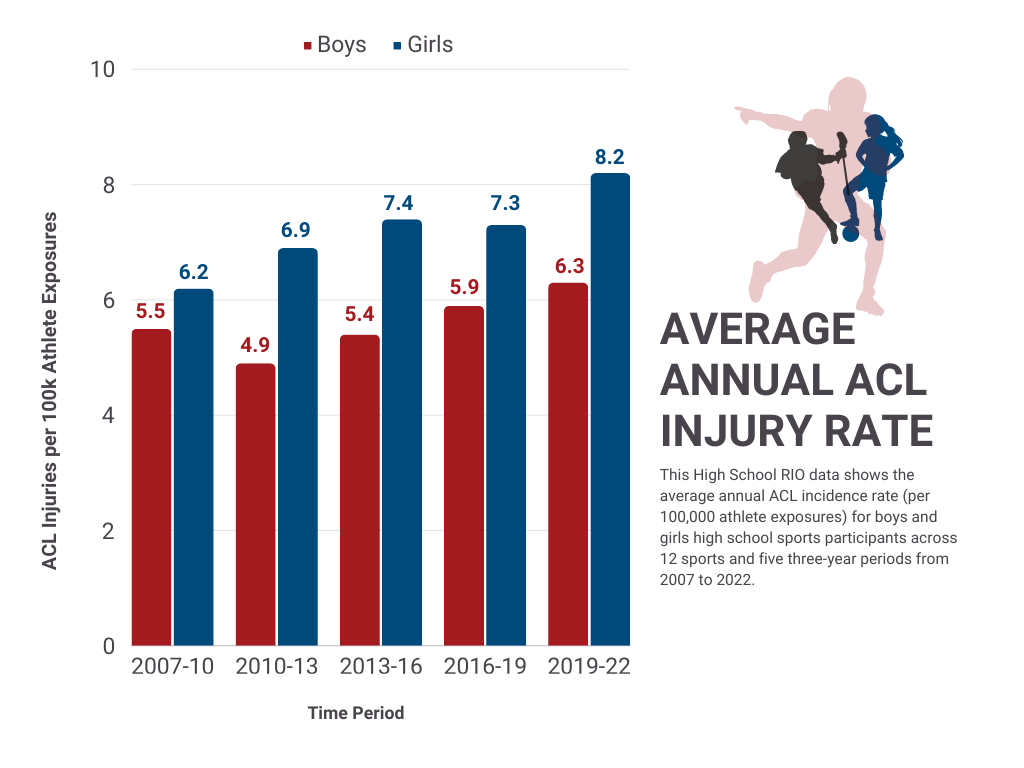
Photo from Aspen Institute
According to the National ACL Injury Coalition, from period one to five, the average yearly ACL injury rate increased 25.9% to 7.3 injuries per 100,000 athlete exposures. ACL injuries represent more than 14% of all injuries involving the knee, research from the non-government organization (NGO) Aspen Institute showed.
The study also showed that high school girls were significantly more likely to injure their ACL in non-contact sports. Of all ACL injuries in girls sports, 57.5% were non-contact, compared to 39.7% in boys sports. The rate was most extreme in girls lacrosse, which recorded more than 8 in 10 injuries were non-contact (82.5%).

Another study showed that compared to their male counterparts, women rugby players are up to eight times more at risk of ACL injuries, and 80% of injuries are non-contact.
A study on injuries among men and women intercollegiate rugby players showed that women are 5.3 times more likely to tear their ACL than their men counterparts. This isn’t surprising due to the movement similarities between rugby and soccer, which have higher injury rates.
Increased ACL injury rate in women’s rugby is because of physiological, anatomical, or biomechanical factors present in women rather than the sport, the study also revealed.
Here are reasons why it is more common in women:
Anatomy – women usually have wider hips compared to men and are more knocked-kneed, which means their knees tend to tilt inward, according to Northwestern Medicine.
Biomechanics – When women land, it’s usually in an upright position, which can cause straighter knees and less core engagement. Meanwhile, men land with bent knees and have more core engagement.
Hormones – Elasticity of collagen in the knee is hit throughout different stages in menstrual cycle, resulting in a higher risk of ACL injury.
Understanding Non-Contact Factors
The increased risk of ACL tears in women can be attributed, in part, to physiological differences. Women often have wider hips, which can affect the angle at which the ACL operates.
Additionally, hormonal fluctuations during menstruation can impact ligament laxity, making women more vulnerable to ACL injuries during certain phases.
The Typical Scenario of an ACL Tear
The process of an ACL tear usually unfolds in a matter of seconds on the rugby field. A player may be running full throttle during a match, but then suddenly stop and change direction. And in that moment—boom! The ACL tears, often with a sharp, excruciating pain and a sense of instability in the knee.
Managing the Risk: Strength Programs and Movement Mechanics
While the risk of ACL injuries in women may be higher, it’s not an insurmountable obstacle. The key lies in proactive injury prevention strategies.
A well-structured strength program can significantly reduce the risk of ACL tears. It should focus on strengthening the muscles surrounding the knee joint and improving overall lower body stability,
Furthermore, honing good movement mechanics and skills related to change of direction can make a substantial difference in the field.
The Diagnosis of ACL Tears
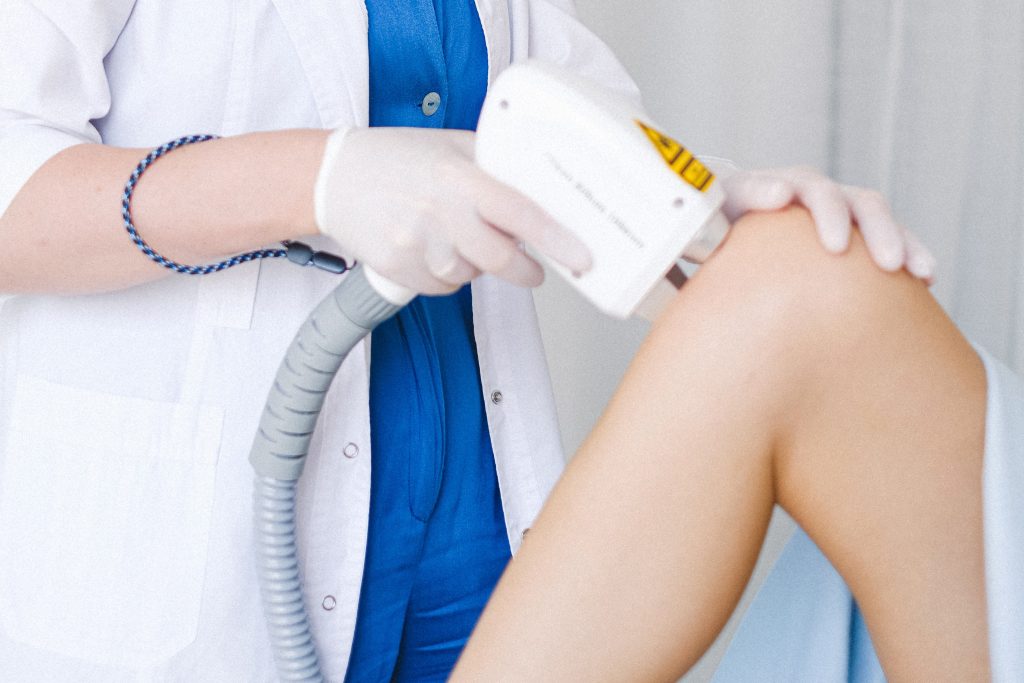
Utilizing Advanced Imaging
Diagnosing an ACL tear is a crucial step in the journey to recovery. This diagnosis is typically performed using advanced imaging techniques such as MRI (Magnetic Resonance Imaging) or ultrasound. These methods provide detailed images that enable healthcare professionals to assess the extent of the injury.
Orthopaedic Expertise
Orthopaedic doctors play a pivotal role in interpreting these diagnostic images. They can discern the striations of the muscle and the torn ligament. They then can pinpoint its location and assess how and where the ligament needs to be reattached.
These factors not only influence the surgical options but also impact the long-term elasticity and functionality of the ACL.
The Road to Recovery: ACL Tear Treatment
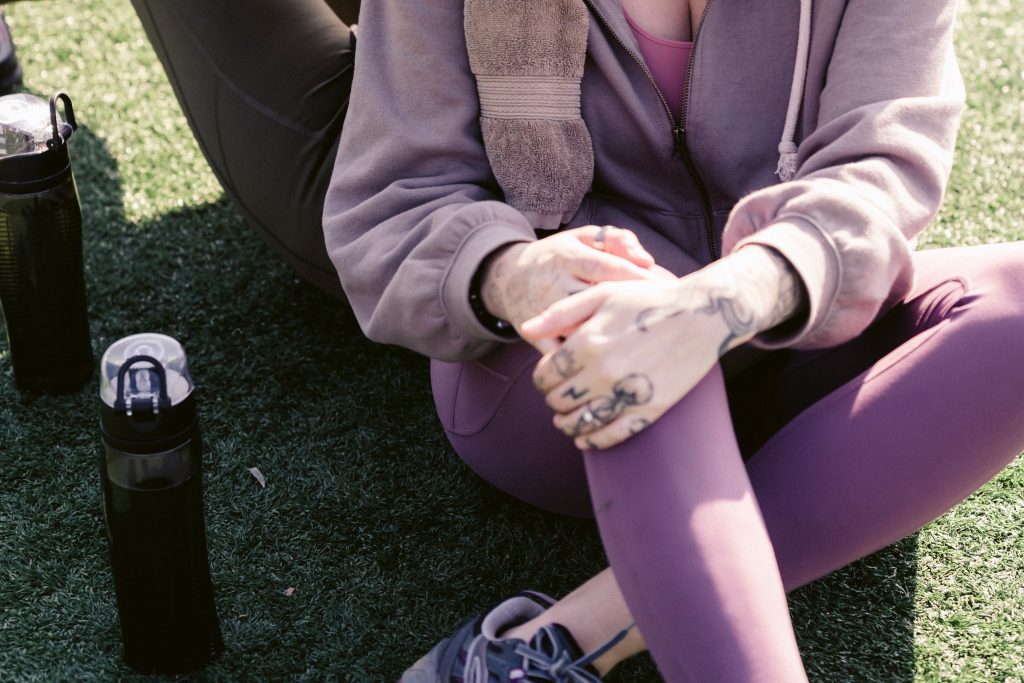
Rehabilitation: The Essential Step
Rehabilitation is a pivotal phase in the recovery process. Many players opt for pre-surgery rehabilitation to strengthen their knee and surrounding muscles, reducing the risk of further damage. Post-surgery, rehab is essential to regain strength, mobility, and stability.
The exercises needed should target quadriceps and glute strength, as well as full range of motion (ROM). They play a vital role in fortifying ligaments and preventing further inflammation. These exercises are typically prescribed by physiotherapists or sports medicine experts.
Static Cycling and Progressive Strength Training
In addition to traditional rehab exercises, static cycling, along with progressive strength training, is often incorporated into the rehabilitation program. Static cycling helps improve cardiovascular fitness while gradually easing the knee back into motion.
On the other hand, progressive strength training focuses on building muscle strength around the knee joint. It provides crucial support during the recovery process.
Non-Surgical Options
Some individuals explore non-surgical options in the hope that the ACL might miraculously find its connections and attach itself adequately. This approach often involves the use of specialized ACL braces and dedicated physiotherapy.
The cost of ACL knee braces, depending on their type, is between AED 130 (USD 35.39) and AED 306 (USD 83.31) (AED 1 = USD 0.27).
Patients commit to their rehabilitation journey, diligently working to regain stability and strength. However, there’s an understanding. If the ligament doesn’t reattach itself satisfactorily, a surgical intervention may be necessary, particularly once growth has ceased.
Consultation for ACL tears may cost differently depending on the hospital. One process of diagnosis is an MRI scan which can cost between AED 799 (USD 217) and AED 7,000 (US 1,905).
Supplementary Support: Cryotherapy and Supplements
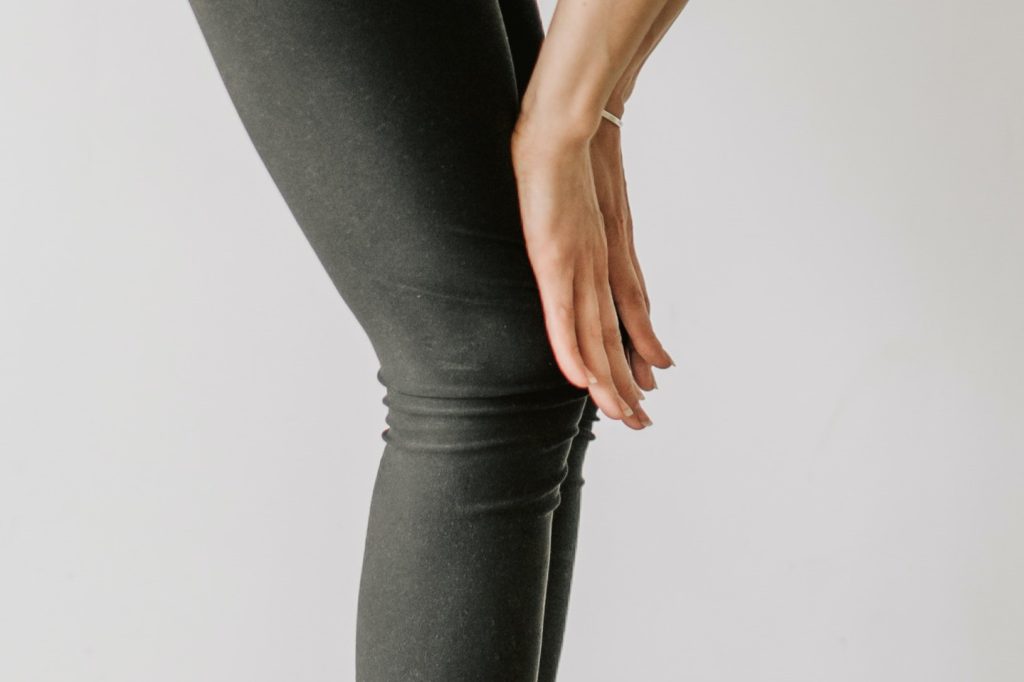
Cryo Straps for Inflammation Management
Many rugby players turn to cryo straps as a supplement to their physical rehab regimen. Cryotherapy, which combines compression and cooling, helps reduce inflammation. This reduction in inflammation can alleviate the “sponginess” that athletes often feel after ACL surgery.
Common Issues Post-ACL Tears
Apart from physical challenges, individuals recovering from ACL tears may face balance and strength issues. These issues highlight the importance of physiotherapy, which aids in addressing these concerns. Pain management is another crucial aspect of recovery that physiotherapy can address.
Take supplements and vitamins
Apart from a healthy diet, it’s also ideal to take vitamins and supplements. Most doctors prescribe a multivitamin that has iron, zinc, calcium, which are needed for recovery process of ACL tears. Collagen supplements are also great for healing process and repairing tissues.
The Mental Battle
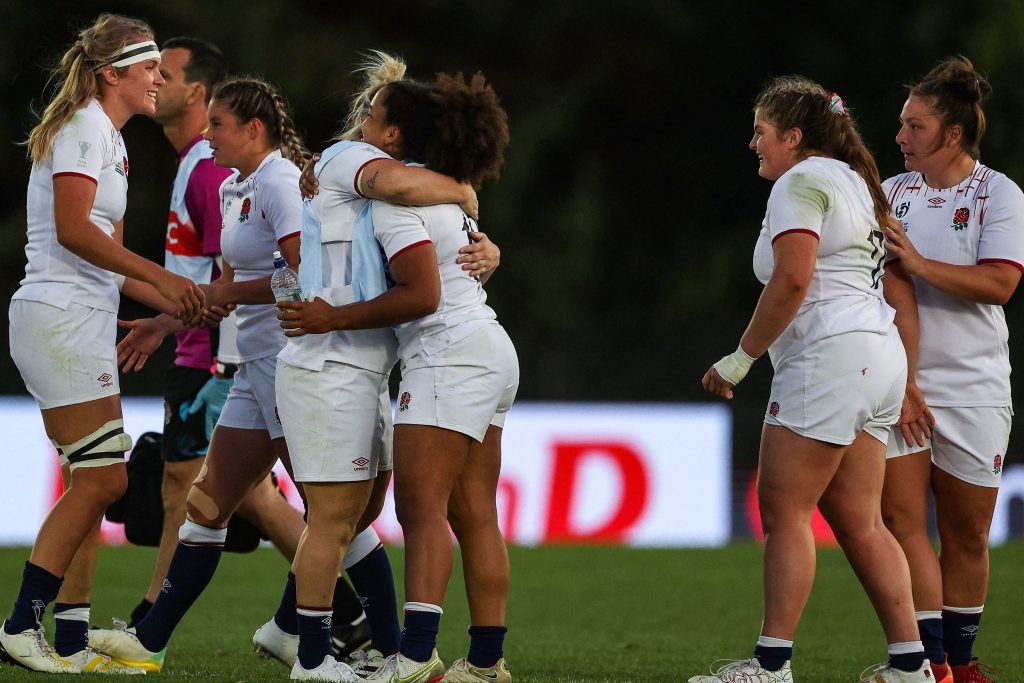
Fear and Resilience
One often overlooked aspect of recovering from ACL tears is the mental battle players face. The fearlessness that characterizes rugby players can fade after such an injury. A quote from a rugby player succinctly captures this mental struggle:
“On the pitch, I was used to giving some big hits and managed to get away fairly unscathed, so I guess it was only a matter of time before I ended up in the hospital! However, the fearlessness I used to have to just smash my opponents into the ground has completely gone, and I’m currently too scared to even attempt to try and run again, let alone get back on the pitch!”
Conclusion: Rising from the Tackle
In rugby, as in life, injuries are a part of the game. Women facing the challenge of ACL tears and other injuries in rugby learn to adapt, recover, and rise once more. It’s a journey of discipline, patience, and unwavering determination.
While the physical scars may heal, there’s going to be a level of mental fortitude being developed here. These trials shape them into stronger players and individuals, ready to take on the next scrum with renewed vigour.
Women in rugby are warriors. Their resilience in the face of adversity is a testament to the indomitable spirit of the sport.



